Top 5 Reasons to Explore the Former Residence of Qu Qiubai in Changzhou
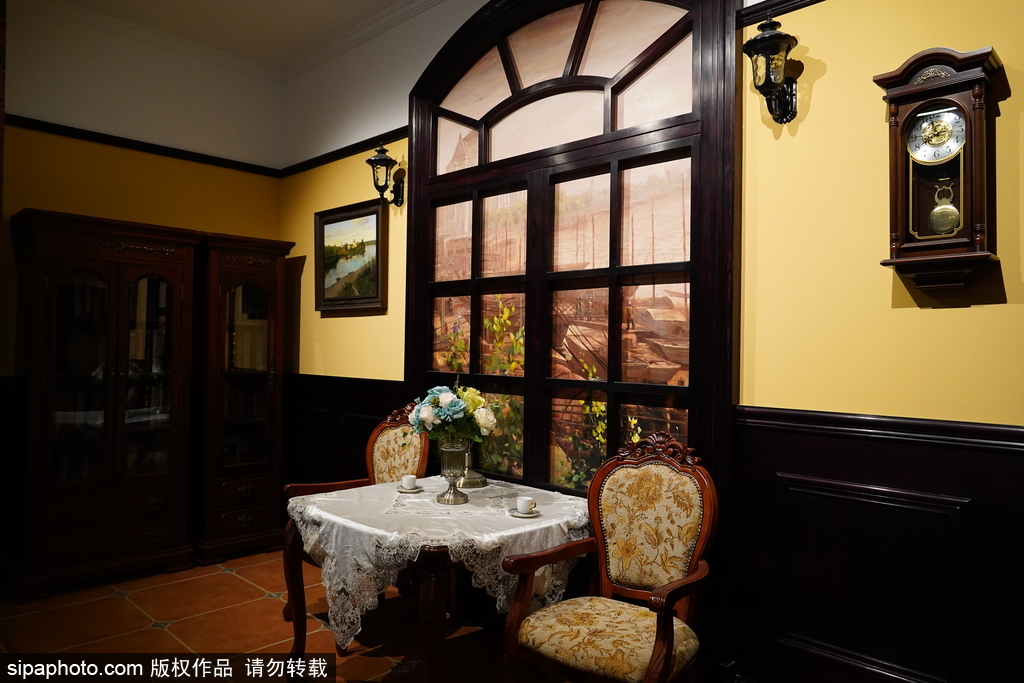
An Essential Guide to Visiting Former Residence Of Qu Qiubai
Nestled in the heart of Changzhou, the Former Residence of Qu Qiubai stands as a poignant testament to a revolutionary life filled with passion, intellect, and a touch of tenderness. This historic site is not merely a house; it is a sanctuary where a young Qu Qiubai, who would later emerge as a leading figure in the Chinese Communist Party, grappled with the complexities of humanity and social justice. What truly sets this residence apart is its ability to encapsulate the spirit of a man often described as the “tender-hearted Communist,” contrasting sharply with the prevailing narratives of hardened revolutionary figures.
In this guide, we invite you to explore the life and legacy of Qu Qiubai through the very walls that witnessed his formative years. You will uncover the rich tapestry of his experiences—from his early struggles with family and society to his philosophical musings that sparked a commitment to reform. We will delve into the architectural features of the residence, its historical significance, and the surrounding landscape that inspired a generation of thinkers and activists.
Whether you are a history enthusiast, a cultural explorer, or simply seeking a deeper understanding of China’s revolutionary past, this guide offers a comprehensive overview of what to see, what to learn, and how to appreciate the nuances of Qu Qiubai’s enduring impact on Chinese society. Prepare to step into a world where history, ideology, and the human spirit converge, and let the essence of Qu Qiubai inspire your journey.
In This Guide
- An Essential Guide to Visiting Former Residence Of Qu Qiubai
- The Rich History and Legends of Former Residence Of Qu Qiubai
- Main Highlights: What You Absolutely Can’t Miss
- Planning Your Visit: A Practical Guide
- Tickets: Prices, Booking, and Tips
- How to Get There: A Complete Transportation Guide
- Local Cuisine and Accommodation Nearby
- Frequently Asked Questions
- Final Thoughts on Your Trip
The Rich History and Legends of Former Residence Of Qu Qiubai
Nestled within the lively streets of Changzhou, the Former Residence of Qu Qiubai stands as a testament to the life and legacy of one of China’s most intriguing historical figures. This modest yet historically significant abode offers a glimpse into the turbulent world of early 20th-century China, where political turmoil and revolutionary fervor reshaped the nation.
A Glimpse Into Qu Qiubai’s Early Life
Qu Qiubai was born in 1899 into a family marked by both privilege and tragedy. His early years were overshadowed by his father’s opium addiction and the subsequent decline of their family’s fortune. This environment of hardship profoundly shaped Qu’s character and worldview. The tragic suicide of his mother when he was just 16 years old propelled him into a life of struggle and resilience. After leaving his hometown for Wuhan and later Beijing, he embarked on a journey of education and self-discovery, ultimately becoming involved in the revolutionary movements that would sweep across China.
The Birth of a Revolutionary
Qu Qiubai’s former residence became a cradle of revolutionary thought during the early 1900s. It was in this very space that he honed his ideas about socialism and reform. The home served as a hub for like-minded individuals who were drawn to the ideals of the May Fourth Movement in 1919, a pivotal moment that ignited a wave of nationalism and anti-imperial sentiment in China.
As Qu transitioned from a reformist ideology rooted in Buddhism to a commitment to Marxism, he became an influential figure in the founding of the Chinese Communist Party. His role as the head of the new provisional politburo during the August 7, 1927 Emergency Conference marked a turning point in his political career, reinforcing the residence’s significance as a site of political awakening.
Legends and Lore of the Residence
Over the years, the Former Residence of Qu Qiubai has become steeped in legends, adding to its allure for visitors. One such story involves Qu’s passionate debates with friends, who would gather in the home to discuss revolutionary literature and philosophy. It is said that these discussions often echoed through the halls, inspiring countless young minds to take up the cause for change.
Another compelling legend speaks of a secret meeting held within its walls, where Qu and other leaders plotted strategies to mobilize the masses against the ruling powers. According to local folklore, the walls of the residence absorbed their fervor, and it is believed that whispers of revolutionary zeal can still be felt by those who enter.
The Transition of the Residence
As the years progressed and political tides shifted, the Former Residence of Qu Qiubai underwent various transformations. After Qu’s execution in 1935, during the Anti-Communist campaigns, the house fell into disrepair, reflecting the turmoil of the times. However, in the late 20th century, efforts were made to restore the residence, honoring Qu’s legacy and the ideals he fought for.
Today, the residence stands as a museum, inviting international travelers to explore its rooms filled with memorabilia, photographs, and literary works that showcase Qu Qiubai’s contributions to Chinese literature and politics. Visitors can walk through the very spaces that once fostered revolutionary ideas and witness the spirit of a man who was both a tender-hearted reformer and a fierce advocate for change.
Conclusion: A Journey Through Time
Visiting the Former Residence of Qu Qiubai is not merely a journey through history; it is an immersion into the life of a man whose compassion and conviction shaped the course of modern China. The residence encapsulates the rich tapestry of stories, legends, and human experiences that continue to resonate with those who seek to understand the complexities of China’s past. As you explore its halls, you may find yourself inspired by the echoes of Qu’s passionate pursuits and the indelible mark he left on the world.
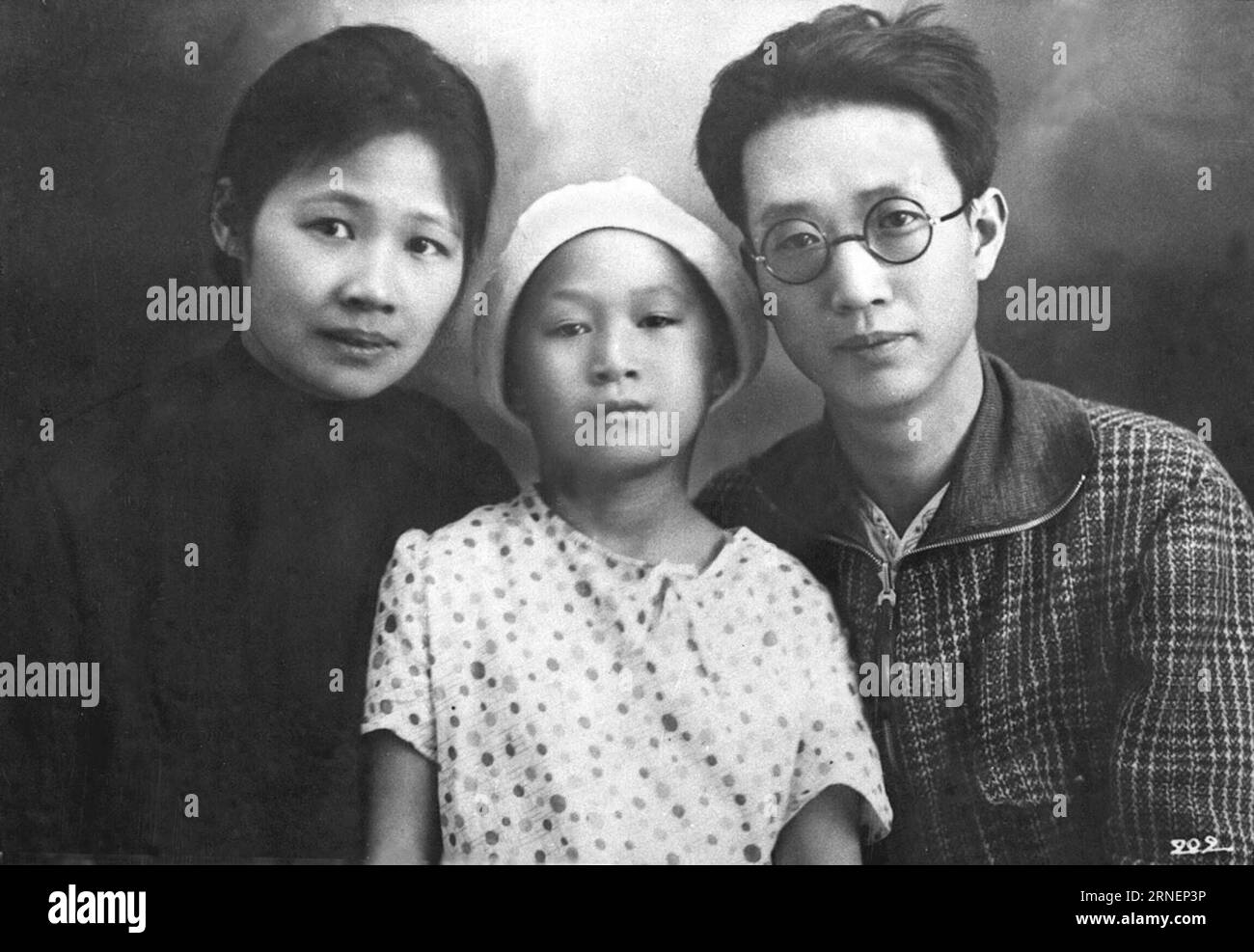
Former Residence Of Qu Qiubai.
Main Highlights: What You Absolutely Can’t Miss
Explore the Qu Qiubai Memorial Hall
Begin your visit at the Qu Qiubai Memorial Hall, housed in the beautifully preserved residence where Qu lived and worked. This hall serves as a tribute to his life and contributions to Chinese literature and politics. As you walk through the rooms, observe the period furniture and personal artifacts that offer a glimpse into the early 20th-century lifestyle. Don’t miss the detailed exhibits showcasing Qu’s writings and his role in the Chinese Communist Party’s formation. Tip: Grab a brochure at the entrance for detailed explanations of each exhibit.
Discover the Writing Room
Qu Qiubai’s Writing Room is a highlight that encapsulates his literary spirit. This intimate space is filled with his books, manuscripts, and a desk that reflects his dedication to writing. The walls are adorned with quotes from his works, providing insight into his thoughts on society, politics, and humanism. Spend a moment here to soak in the atmosphere of creativity and reflection. Tip: Bring a notebook to jot down your thoughts inspired by Qu’s writings.
Visit the Garden of Reflection
Step outside to the Garden of Reflection, a serene space designed for contemplation. Lush greenery, traditional Chinese landscaping, and tranquil pathways create an ambiance perfect for reflection on Qu’s ideals of altruism and social reform. It’s an ideal spot to take a break and enjoy nature’s beauty. Tip: Consider visiting early in the morning or late afternoon when the sunlight casts a golden hue over the garden.
Examine the Exhibition Hall
Next, make your way to the Exhibition Hall, which features rotating displays that delve deeper into Qu’s life and the historical context of his work. Here, you can find photographs, letters, and artifacts that chronicle the tumultuous period of the early 20th century in China. This hall often hosts lectures and discussions, so check the schedule in advance for any special events. Tip: Allow extra time if you’re attending a lecture, as they often include Q&A sessions with historians.
Encounter the Memorial Sculpture
As you stroll through the grounds, don’t miss the Memorial Sculpture dedicated to Qu Qiubai. This striking piece of art captures his essence and is a popular photo spot among visitors. The sculpture symbolizes his passion for justice and equality, making it a meaningful addition to your tour. Tip: Take a moment to reflect on the significance of the sculpture and how it represents Qu’s enduring legacy in Chinese history.
Explore the Historical Context Room
For those interested in a deeper understanding, the Historical Context Room provides an overview of the socio-political landscape during Qu’s lifetime. Engaging displays illustrate the challenges faced by the Chinese Communist Party during its formative years. This room contextualizes Qu’s contributions and the struggles of the movement. Tip: Use the interactive screens to explore multimedia content that enhances your understanding of the era.
Relax at the Café
Finally, unwind at the on-site Café, a cozy spot where you can enjoy traditional Chinese tea and snacks. The café is inspired by Qu’s love for literary discussions, making it the perfect place to reflect on your visit or discuss your thoughts with fellow travelers. Tip: Try the local pastries, which are a delightful treat and pair wonderfully with the tea selection.
By exploring these key highlights at the Former Residence of Qu Qiubai, you will not only gain insight into the life of this influential figure but also appreciate the rich cultural tapestry of early 20th-century China.
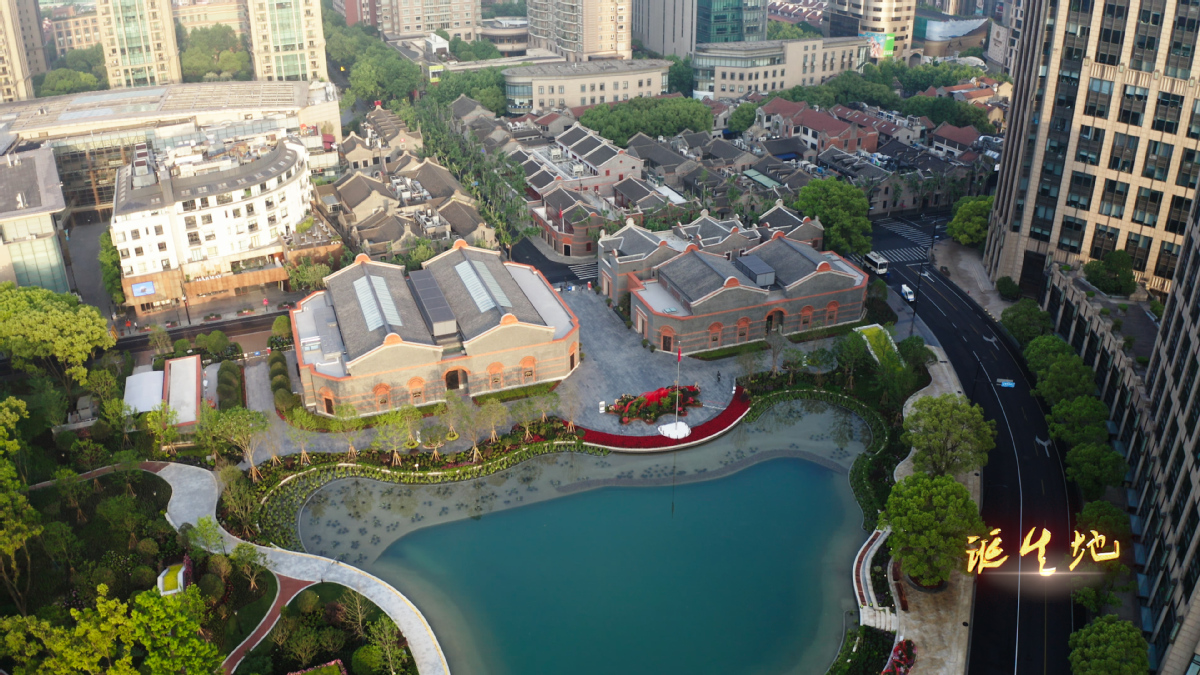
Former Residence Of Qu Qiubai.
Planning Your Visit: A Practical Guide
Best Time to Visit
The Former Residence of Qu Qiubai is best visited during the spring (March to May) and autumn (September to November) months. During these seasons, the weather is mild and pleasant, making it ideal for exploring the outdoor areas surrounding the residence and enjoying the historical architecture without the discomfort of extreme heat or cold. Additionally, consider visiting on weekdays to avoid crowds and have a more intimate experience with the exhibits.
Recommended Itinerary
To make the most of your visit to the Former Residence of Qu Qiubai, follow this suggested itinerary:
-
Arrival: Aim to arrive by mid-morning. The residence opens at 9:00 AM, allowing you to start your day early.
-
Guided Tour: Take a guided tour (available in both Mandarin and English) to gain deeper insights into Qu Qiubai’s life, his contributions to Chinese literature and politics, and the significance of the residence itself. Tours typically last about an hour.
-
Exploration: After the tour, spend some time exploring the gardens and surrounding areas. The site features beautiful landscaping that reflects traditional Chinese aesthetics.
-
Exhibitions: Visit the various exhibitions that showcase Qu’s literary works and artifacts related to his life. Allocate at least another hour for this.
-
Lunch: Nearby eateries offer local cuisine. Try some traditional Jiangsu dishes, which can enhance your cultural experience.
-
Wrap Up: Before leaving, browse the souvenir shop for books or memorabilia related to Qu Qiubai and Chinese literature.
Photography Tips
-
Golden Hours: For the best natural lighting, visit during early morning or late afternoon. The soft, golden light enhances the beauty of the residence and gardens.
-
Architectural Details: Capture close-ups of architectural elements like doorways and windows. The intricate designs are unique and tell a story of their own.
-
Respectful Photography: Be mindful of other visitors and the exhibits. Avoid using flash inside the residence to protect sensitive artifacts.
-
Candid Moments: Take candid shots of the interaction between visitors and the exhibits; these often create the most memorable photographs.
What to Wear
Dress comfortably but respectfully, as the site is of historical significance. Here are some suggestions:
-
Comfortable Footwear: You’ll be walking around the residence and gardens, so wear comfortable shoes suitable for walking.
-
Layers: Depending on the season, bring layers to accommodate fluctuating temperatures, especially if you plan to stay for an extended period.
-
Sun Protection: If visiting in the warmer months, consider a hat and sunglasses, as some outdoor areas may lack shade.
Insider Tips
-
Download an App: Before your visit, download a translation app if you’re not fluent in Mandarin. This will help you navigate signs or converse with locals.
-
Join a Workshop: Look for any scheduled workshops or readings that may coincide with your visit. Participating in these can offer a unique glimpse into Qu Qiubai’s literary world.
-
Visit Nearby Attractions: Plan to explore other nearby historical sites, such as the Changzhou Museum or local parks, to enrich your understanding of the area’s culture and history.
-
Take a Book: Bring a copy of one of Qu Qiubai’s works or related literature to read in the gardens. This immersive experience connects you more deeply with the site.
-
Engage with Staff: Staff members are often knowledgeable and passionate about Qu Qiubai’s life. Strike up a conversation to learn more about lesser-known anecdotes or insights about the residence.
By following this practical guide, you can ensure a fulfilling visit to the Former Residence of Qu Qiubai, immersing yourself in the rich history and cultural significance of this remarkable site.

Former Residence Of Qu Qiubai.
Tickets: Prices, Booking, and Tips
Visiting the Former Residence of Qu Qiubai is an enriching experience, allowing you to delve into the life of this significant figure in Chinese history. To ensure a smooth visit, here’s all the essential ticket information, along with tips for booking.
| Ticket Type | Price (CNY) | Includes |
|---|---|---|
| Adult Ticket | 40 | Entrance fee to the residence and exhibitions |
| Student Ticket | 20 | Entrance fee for students (valid ID required) |
| Senior Ticket | 20 | Entrance fee for seniors (above 60, valid ID required) |
| Group Ticket (10+) | 30 per person | Entrance fee for groups of 10 or more |
How to Book
To maximize your experience, it’s highly recommended to book your tickets in advance. This can be done through the official website of the Former Residence of Qu Qiubai or via popular local ticketing platforms. Booking ahead not only secures your spot but also allows you to choose your preferred date and time for visiting.
Tips for a Successful Visit
- Plan Your Visit Early: The museum can get busy, especially during weekends and holidays, so booking your tickets early is essential.
- Check for Special Exhibitions: Occasionally, there may be special exhibitions or events. Keep an eye out on their website for any announcements that might coincide with your visit.
- Consider a Guided Tour: For a deeper understanding of Qu Qiubai’s life and the context of his work, consider joining a guided tour if available.
By preparing in advance, you can ensure a more enjoyable experience at this historically significant site.
How to Get There: A Complete Transportation Guide
Exploring the Former Residence of Qu Qiubai: Your Transportation Guide
Visiting the Former Residence of Qu Qiubai offers an insightful journey into China’s revolutionary history. Nestled in Changzhou, this historic site is accessible via various transportation methods. Here’s a comprehensive guide to help you navigate your way there.
From the Nearest Major City: Shanghai
By Train:
The quickest way to reach Changzhou from Shanghai is by train. High-speed trains depart regularly from Shanghai Hongqiao Railway Station to Changzhou Railway Station, making your journey both swift and comfortable.
- Duration: Approximately 1.5 to 2 hours.
- Cost: Tickets range from ¥50 to ¥150 (around $8 to $25), depending on the class of service.
- Frequency: Trains run every 30 minutes to an hour.
By Bus:
For a more economical option, you can take a long-distance bus from Shanghai to Changzhou.
- Duration: Around 2.5 to 3 hours.
- Cost: Approximately ¥40 to ¥70 (about $6 to $11).
- Departure Points: Buses leave from various terminals, including Shanghai South Long-Distance Bus Station.
By Car:
If you prefer to drive, renting a car is a viable option. The drive from Shanghai to Changzhou is straightforward via the G42 expressway.
- Duration: Approximately 2 hours, depending on traffic.
- Cost: Fuel costs will vary, but expect to spend around ¥150 (about $23) on gas.
From Changzhou Railway Station
Once you arrive at Changzhou Railway Station, you have several options to reach the Former Residence of Qu Qiubai.
By Taxi:
The easiest way to get to the residence is by taxi.
- Duration: About 20 minutes.
- Cost: Expect to pay around ¥30 to ¥50 (approximately $5 to $8).
By Public Bus:
For those looking to save money, public buses are available.
- Route: Take Bus 8 or Bus 20.
- Duration: Approximately 30 to 40 minutes, depending on traffic.
- Cost: A bus ticket costs around ¥2 (less than $0.50).
Getting Around the Scenic Area
Once you arrive at the Former Residence of Qu Qiubai, the area offers a charming atmosphere worth exploring. Here are some tips on getting around:
On Foot:
The residence is situated in a pedestrian-friendly area. Strolling around allows you to appreciate the local architecture and nearby attractions.
Bicycles:
If you’re feeling adventurous, consider renting a bicycle. Many rental services are available nearby.
- Cost: Typically around ¥10 to ¥20 (about $1.50 to $3) for a few hours.
Local Tours:
Guided tours are also available, providing insights into Qu Qiubai’s life and significance. Check with local tourism offices for options and pricing.
Conclusion
Visiting the Former Residence of Qu Qiubai is not only a trip through history but also an opportunity to explore the beautiful city of Changzhou. With various transportation options at your disposal, you can easily plan your visit and immerse yourself in the rich cultural tapestry of this historic site.
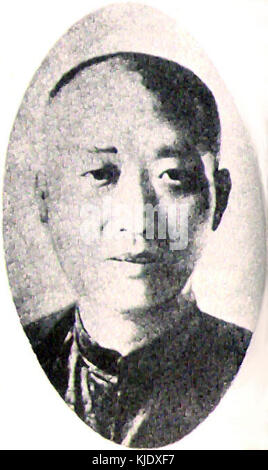
Former Residence Of Qu Qiubai.
Local Cuisine and Accommodation Nearby
Nestled within the vibrant streets of Changzhou, the Former Residence of Qu Qiubai offers a fascinating glimpse into the life of a pivotal figure in Chinese history. After exploring the residence, you may find yourself eager to indulge in the local cuisine and discover a comfortable place to stay. Here’s a guide to delicious dishes and nearby accommodations that cater to various tastes and budgets.
Local Delicacies to Savor
-
Changzhou Noodles (常州炒面)
A local staple, Changzhou noodles are stir-fried to perfection with a delightful mix of vegetables, meat, and a savory sauce. Often featuring fresh greens, tender pork, and a dash of soy sauce, this dish is a must-try for those seeking an authentic taste of the region. -
Steamed Pork Buns (包子)
These fluffy, steamed buns are filled with a rich mixture of minced pork and spices. The delicate dough, combined with the juicy filling, makes for a satisfying snack or meal. Look for variations that may include seasonal vegetables or regional spices for a unique twist. -
Sweet and Sour Mandarin Fish (糖醋鲤鱼)
This dish is a delightful representation of local cuisine, showcasing a whole fish fried to golden perfection and then coated in a tangy sweet and sour sauce. The combination of flavors and textures is sure to please any palate, making it a popular choice among both locals and tourists. -
Braised Pork Belly (红烧肉)
Known for its melt-in-your-mouth texture, this dish features tender chunks of pork belly slow-cooked in a mixture of soy sauce, sugar, and spices. The result is a rich, aromatic dish that pairs beautifully with steamed rice, allowing you to fully enjoy the delectable sauce.
Where to Stay
Luxury Accommodation
- Crowne Plaza Changzhou
Offering lavish rooms and stunning views of the city, the Crowne Plaza is perfect for travelers seeking a luxurious experience. With top-notch amenities, a spa, and multiple dining options, it provides a serene retreat after a day of exploration.
Boutique Hotel
- Jinling Grand Hotel
This boutique hotel combines modern design with traditional Chinese elements, creating a unique atmosphere. Guests can enjoy personalized service, stylish accommodations, and a dining experience that features both local and international cuisine.
Budget-Friendly Options
-
7 Days Inn Changzhou
For those on a budget, 7 Days Inn offers clean and comfortable rooms at an affordable price. Located conveniently close to major attractions, this hotel is ideal for travelers looking to explore the city without breaking the bank. -
Home Inn Changzhou
Another budget option, Home Inn provides basic yet comfortable accommodations with essential amenities. Its central location makes it easy to access local restaurants and attractions, ensuring a hassle-free stay.
Whether you’re indulging in the local flavors or resting in a cozy room, your visit to the Former Residence of Qu Qiubai will surely be enhanced by the rich culinary and hospitality offerings of Changzhou. Enjoy your journey!
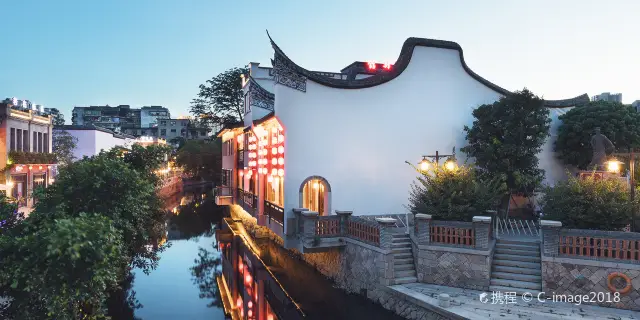
Former Residence Of Qu Qiubai.
Frequently Asked Questions
Frequently Asked Questions about the Former Residence of Qu Qiubai
-
Is the Former Residence of Qu Qiubai suitable for children and the elderly?
Yes, the Former Residence of Qu Qiubai is accessible and suitable for visitors of all ages. The site is well-maintained, and there are no strenuous activities involved, making it a great educational visit for families with children and for elderly travelers. -
Are there English signs available throughout the museum?
Yes, there are English translations for many of the informational signs and exhibits within the museum. While some descriptions may only be in Chinese, most key displays provide English context to enhance the visitor experience. -
How much time should I plan for my visit?
We recommend allocating about 1 to 2 hours for your visit. This should provide ample time to explore the residence, read the exhibits, and appreciate the historical context of Qu Qiubai’s life and contributions. -
What are the opening hours of the Former Residence?
The Former Residence of Qu Qiubai is typically open from 9:00 AM to 5:00 PM, with the last admission at 4:30 PM. It is advisable to check the official website or local resources for any changes in hours, especially during holidays. -
Is there an admission fee?
Yes, there is a nominal admission fee to enter the Former Residence of Qu Qiubai. Discounts may be available for students, seniors, or groups, so it’s worth inquiring at the ticket counter. -
Can I take photographs inside the residence?
Photography is generally permitted in most areas of the Former Residence, but there may be restrictions in certain rooms or during special exhibitions. Be sure to check for any posted signage regarding photography rules. -
Is there a gift shop or café on-site?
While the Former Residence does not have a café, there is often a small gift shop where you can purchase souvenirs, books about Qu Qiubai, and other memorabilia related to Chinese history and literature. -
How do I get to the Former Residence of Qu Qiubai?
The residence is conveniently located in the city center and is accessible via public transportation, including buses and subways. Taxis and ride-sharing services are also readily available, making it easy to reach the site from various points in the city.
Final Thoughts on Your Trip
Visiting the Former Residence of Qu Qiubai offers a profound glimpse into the life of a man who embodied the spirit of change during a tumultuous period in Chinese history. As you wander through the halls where Qu once lived, you can almost feel the weight of his experiences, from the struggles of his youth to his emergence as a key figure in the Chinese Communist movement. His journey, marked by compassion and resilience, serves as a testament to the power of ideals and the impact of one person’s commitment to societal reform.
As you reflect on Qu Qiubai’s legacy, consider the broader narrative of hope and transformation that his life represents. This is not just a story of political upheaval; it is a story of the power of the human spirit to advocate for justice and change. Let your visit inspire you to seek understanding and compassion in your own journey, reminding you that even the most tender-hearted among us can ignite the flames of revolution. Embrace the lessons of history, and carry them forward as you explore the world around you. Your adventure is just beginning, and the spirit of Qu Qiubai lives on in every step you take toward understanding and connection.